Florida: the land of Disney World and beaches, right? The Sunshine State; however, has plenty more to offer, and it goes beyond oranges, palm trees, golf courses, and swamplands.
Below is a Southern Florida Itinerary. This February, my boyfriend and I had just about had enough of winter in Central Pennsylvania and decided we needed to head south. We did save time for beaches and Disney, but we also scoped out most of Florida’s National Parks (that’s right, there’s more than just the Everglades!) as well as some other points of interest along the way.
Fly into Orlando
Orlando is a great starting and ending point for any southern Florida adventures. Southwest Airlines is our preferred airline for flights within the United States, especially since the two free checked bags per person allows us the extra room to pack camping supplies. This time, we decided against camping. However, I will mention a place that we considered later on that offers a truly unique camping experience.
Since this itinerary follows a clockwise road-trip-style route, a rental car is a must. We booked online to find the best rates. Often when traveling, you might save a few bucks by renting a car from the nearest downtown agency and taking public transit from the airport to pick it up. In Orlando, however, going the extra mile doesn’t make a difference, so you might as well save yourself the hassle and grab a rental right from the airport.
Also, what follows is our personal experience based on our route through Southern Florida. No doubt, Florida offers plenty of road trip options that cover every part of the state. So you can hit up the beaches, the parks, and everything in between if you like.
Canaveral National Seashore
After months of winter chill and gray, barren trees, it was a technicolor shock to drive out of the airport. Thick, green grass and flowers galore—we were definitely not in Pennsylvania anymore. First on our list was to get our National Parks passports stamped at Canaveral National Seashore.
The Apollo Visitor Center for the seashore is about an hour and 22 minutes northwest of Orlando. The best part of the seashore, however, is a six-mile scenic drive abundant with birds and wildlife. The entry point for this Black Point Wildlife Drive is less than an hour from Orlando International Airport. There are a few things to see up in the Apollo Visitor Center area; however, this scenic drive is the true gem of the seashore, and it may just be worth skipping the extra drive to the Visitor Center if you’re short on time.
We actually spent much more time than we thought we would at the National Seashore. Though the scenic drive is only six miles, an hour or two flew on by as we marveled at the strange birds you don’t often see in the northeastern U.S.—White Egrets, Roseate Spoonbills, Wood Storks, and more! At the beginning of the drive there is a self-guided trail map, as well as a $10 fee per vehicle on the honor system. It is well worth it. All in all, we spent a good few hours at the seashore and even saw some of our first Florida gators!
And if you need a place to stay, check out all of the options on the Space Coast, including these Cocoa Beach airbnbs or these Satellite Beach vacation rentals.
Kennedy Space Center
Since we did spend more than our allotted time at the National Seashore, that meant we had to cut things short at our next destination—the Kennedy Space Center. Unfortunately, we only just missed the final tour of the day to the Cape Canaveral launch pad where you can see unique spacecraft like the Saturn V, which was the largest rocket ever flown, as well as other history, artifacts, and technologies important to lunar exploration. (You can get tickets and book tours here.)
We were; however, able to spend a good amount of time exploring the Space Shuttle Atlantis, one of the first space shuttles designed to make multiple trips into space. All-in-all the Atlantis flew 33 missions until its last flight in July 2011.
Other attractions of the Kennedy Space Center include the U.S. Astronaut Hall of Fame, Astronaut Encounter, Astronaut Training and Launch Simulators, IMAX theatre, gift shops, and more!
Biscayne National Park
While the state is a whopping 65,755 square miles total, you are never more than 60 miles from the ocean. It’s no surprise then that one of Florida’s National Parks is actually 95% water. Biscayne National Park encompasses coral reefs, islands, and shoreline mangrove forest in the northern Florida Keys just off of Florida’s southeastern coast.
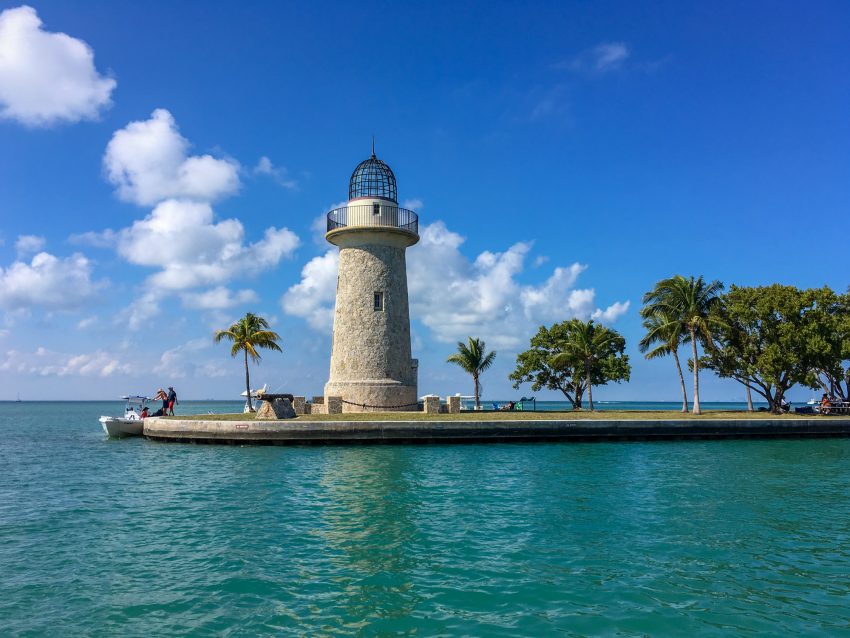
For the more experienced water-treaders, the park has several paddling trail guides for exploring the waters and wildlife of Biscayne, as well as fishing and boating opportunities. The park also offers several guided tours from shipwreck snorkeling to nearby key excursions, like the one we took to Boca Chita Key, which was once a regular destination for the Honeywell family and Florida’s elite. And here is a list of even more things to do in Biscayne National Park if you plan to spend more time there.
The Dante Fascell Visitor Center also has some educational displays and a film about the National Park. You can book tours from the small shop next door, which also sells some of the essentials for a day on the water, as well as souvenirs.
*Note: one way to get to the visitor center hub is to drive through miles of coconut farm. Keep your eyes peeled for a roadside stand where a local farmer will machete a coconut open for you to drink right out of! While you’re there you can also pick up some nice juicy mangoes and other tropical fruits.
Miami
After Biscayne, our plan was to make our way down to Key West. I know, what about Miami? While I can appreciate the culture of a city like Miami, we decided to pass through on this particular trip. If you decide to spend some time in the city, check out our guide and travel costs here or places to stay in Miami Beach here. Another neat attraction we only just drove past on our way out of Biscayne was the Homestead-Miami Speedway, so if you’re a race car enthusiast, I’m sure that’s another great stop to check out.
Key West
But, onwards to Key West!
It takes about three hours to drive from Biscayne down to Key West without any stops. On the way down you’ll see some fun tourist traps, especially through Islamorada, like Wahoo’s Bar & Grill, and other eye-catchers like a giant conch or oversized shrimp to draw you into one place or another. Past this tourist stretch are some residential areas, where manatee and dolphin mailboxes seem to be the latest fad.
One interesting bit of history you might see as you pass through the lower keys is the abandoned Bahia Honda Rail Bridge (part of the Bahia Honda State Park). Originally part of the Overseas Railway, the bridge was eventually converted for automobile traffic, and later replaced by a four-lane bridge a few hundred yards north of the old bridge. Today, parts of the bridge are open to pedestrians, though a large part stands in disrepair.
Eventually, you’ll find yourself entering Key West. As a major tourist destination, Key West is a place that needs to be booked far in advance to make the best of your budget. (You can book the cheapest places here.) We booked a bit later, but found a reasonable deal at the Conch House Heritage Inn in their Casa Cabana—a ham radio shack, turned pool house, turned private cabana. And even more cute and affordable places to stay for couples in Key West can be found here.
Key West itself is very much a Margaritaville, and was, in fact, a part of the inspiration for the song. Beyond wasting the day away in the bubble of bars and live and music, there are some interesting attractions peppered throughout the bustle. You can visit Harry S. Truman’s Little White House where the U.S. President spent his winters, or stand at the iconic buoy marking the southernmost point of the continental U.S., 90 miles to Cuba.
Even the cemetery is a neat place to explore with a unique variety of tombstones and mausoleums, funny last words, historical figures, and wild lizards. If you’re lucky you might even see an iguana lurking about. Also keep your eyes peeled for “I told you I was sick” and “I’m just resting my eyes.”
See activities for Key West here.
*Note: Key West is not known for its beaches. Some of the best Florida beaches are on its west coast. We’ll get to that later.
*Also note: Another of Florida’s National Parks is accessible from Key West: Dry Tortugas National Park. Located about 70 miles west of Key West, the only way to reach this park is by ferry from Key West. Highlights include a historic fort, remote natural beauty, wildlife, beaches, coral reefs, campgrounds, and a variety of activities both in and out of the water. Since we only had one week set aside for this trip, the Dry Tortugas were another stop we decided to set aside for next time.
Everglades National Park
Unfortunately, if you’re driving, the only way out of Key West is back the way you came. So three hours we went, back through the Florida Keys all the way to Homestead near Miami. Starting bright and early the next day, we made our way towards the Ernest F. Coe Visitors Center—the gateway to the southern portion of Everglades National Park. From here we grabbed a park map, stamped our passports, and got some tips from a park ranger on what to fit in a day of exploring the Everglades. After all, visiting this iconic and unique Florida destination full of alligators, gorgeous birds, and fascinating landscapes is definitely one of the best things to do in Florida, and we couldn’t miss the opportunity.
Trails
The first must-do of the Everglades is the Anhinga Trail, just a few minutes from the Ernest F. Coe Visitor Center. Beginning at the Royal Palm Visitor Center, the trail is a paved walkway and a boardwalk over Taylor Slough, a freshwater sawgrass marsh. While the trail is less than a mile round-trip, it is teeming with wildlife—alligators, turtles, anhingas, herons, egrets, and many other birds, especially in the winter. Also nearby is the Gumbo Limbo Trail, which is half as long as the Anhinga Trail, but offers a nice shady alternative with some interesting signage on the local plant life.
For the history buffs, you can even visit an old Nike missile base and the last Nike Hercules Missile to defend the Continental U.S. The complex is down a side road near the Royal Palm area.
Driving
Once you’ve explored all there is to see in the Royal Palm general area, head on down along Florida State Road 9336. There will be plenty of stops along the way to learn about the unique wildlife and habitats of the Everglades, eventually ending at the Flamingo Visitor Center. Since we had only set aside one day for the Everglades, we traveled as far as the Mahogany Hammock, which is about halfway to Flamingo. This trail was another unique boardwalk through a grouping of mahogany trees surrounded by wetlands, a habitat known as a “hammock.” We also stopped at the Pa-Hay-Okee Lookout Tower, where you can view sawgrass wetlands for miles.
Each trail has signage with educational information, so you can learn as you explore, and, if you need a break from the sun, most of the Visitor Centers also have indoor exhibits. There really is plenty to see, do, and learn for people of all ages and walks of life. One could easily spend a week or more within the park, let alone one day!
Airboat
A visit to the Everglades is just not complete without a ride on an airboat. Our final mission of the day was to have that experience. We had thought about booking a tour in advance, but were glad we waited since we found out that the National Park Service runs three tours amidst the many commercial options flooding the internet: the Coopertown Original Airboat Tour, Everglades Safari Park, and Gator Park. We opted for the original Coopertown tour and could not have been happier.
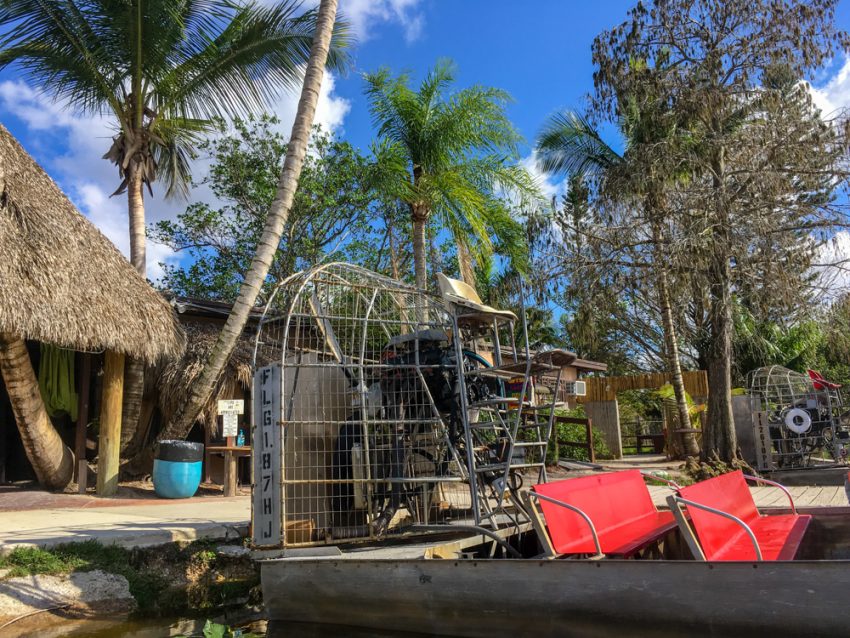
Most of the airboat tours are located in the northern part of the park, so back past Ernest Coe we went, back through Homestead, and up towards the park’s northern entrance. You’ll find the Coopertown Airboat about five miles down the road on the left once you turn left onto SW 8th Street (US-41)—a big grass hut underneath a giant American flag, and a sign you cannot miss. Adult tickets are $26 each, but you often save by booking online ahead of time.
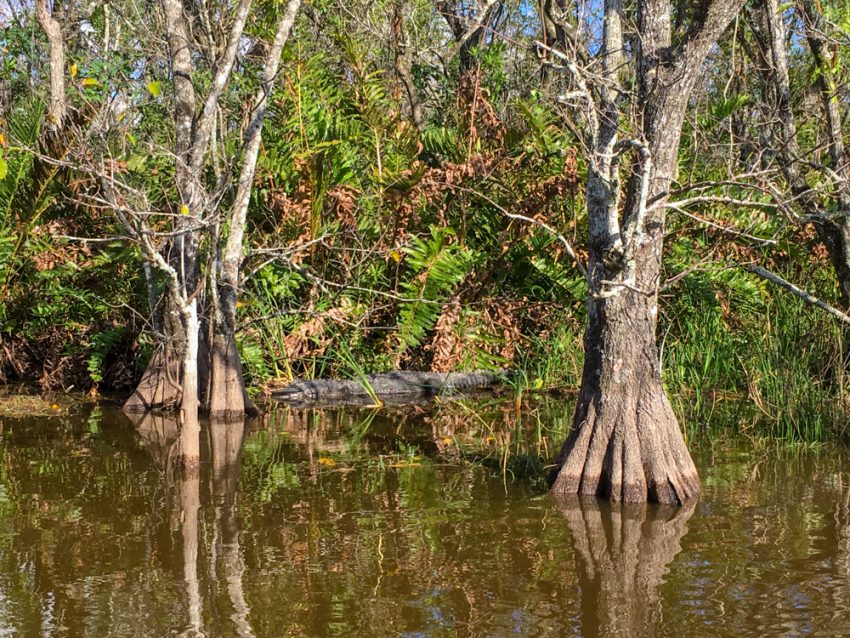
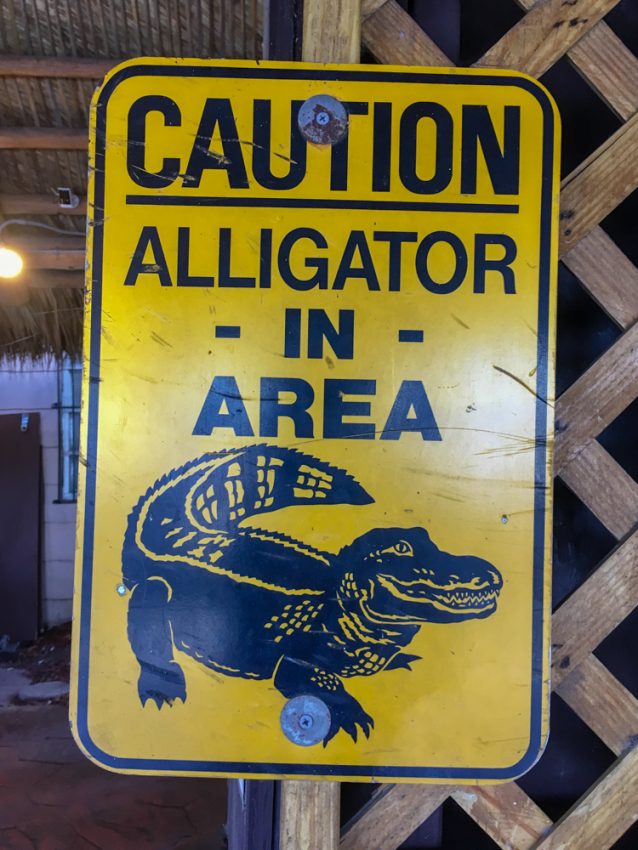
Hopping into the boat and stuffing our ears with cotton balls, we knew we were in for a ride. With their flat bottoms and industrial-sized fans, some airboats can reach speeds up to 130 mph. Coopertown doesn’t go quite that fast, but you still get some crazy airboat hair. The weird feeling of gliding over grass and water is also worth the experience—nothing like a sharp turn in an airboat to get a splash of thrill for the day.
The ride itself was like nothing else, but we did see some gators and a variety of birds on the tour as well. Highlight of my day: holding a baby alligator! After the 30-minute airboat ride, Coopertown offered us a close-up encounter with the little critter. I’d call that a successful Everglades airboat adventure.
Big Cypress National Preserve
Following the airboat tour, our final destination of the day was Everglades City where we would be staying for the night. Heading west on US-41 we could arrive in about an hour easy, so we decided to take a scenic detour on Loop Road of Big Cypress Preserve, which veers off to the south. After a busy day of exploring the Everglades, we had entered Big Cypress at the golden hour of the setting sun. Kicking up a dust cloud as we moseyed off the beaten path, we couldn’t help but stop to admire the reflections of tall cypress trees in mirrored waters. A mean-looking, one-eyed gator even popped up to give us a wink.
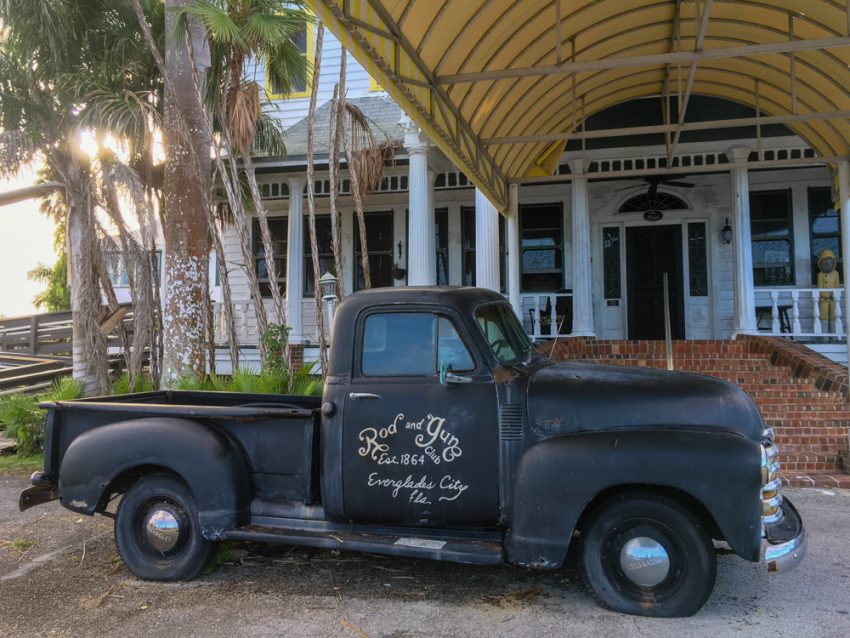
After a pleasant evening drive, we made it to Everglades City and settled into our place of stay at the Rod & Gun Club—a remnant of “Old Florida.” Being from the northeastern United States, the best way I could describe this place was in comparison to some of the old resorts of the Borscht Belt in Upstate New York. A monument to a Gilded Age, the place was more like a museum, complete with a fine restaurant, great room, Victorian sitting rooms, a foyer with walls of newspaper clippings depicting significant events in the small Florida town, and a collection of native taxidermy species.
The upstairs of the original building is closed to the public, however, a complex of cottages now house visitors along the Barron River, each with individual screened porches and rooms for guests. Though we only had one night here, it was definitely one of those unexpected gems where we could have spent days. The place and the surrounding area just had an air of legend, lore, and history.
*Note: If you like historical fiction, there’s actually a popular book series based on the history and legend of this general area, called The Shadow Country Trilogy by Peter Matthiessen.
The next day’s escapade was set aside for Captain Steve’s Swamp Buggy Adventure—another off-the-beaten-path tour that we came across on a blog by National Geographic. Run by Captain Steve himself, a gladesman through and through, the unique venture takes guests into the wilderness of Big Cypress Preserve like only a native could. Our buggy was led by Captain Bobby and it was really neat to learn that we were one of only two buggies per day allowed within the 720,000-acre preserve. While we kept our eyes open for the elusive Florida panther, I think one of the highlights had to be python tracks slithering through the mud—an eerie remnant of a snake you wouldn’t want to meet in the wild.
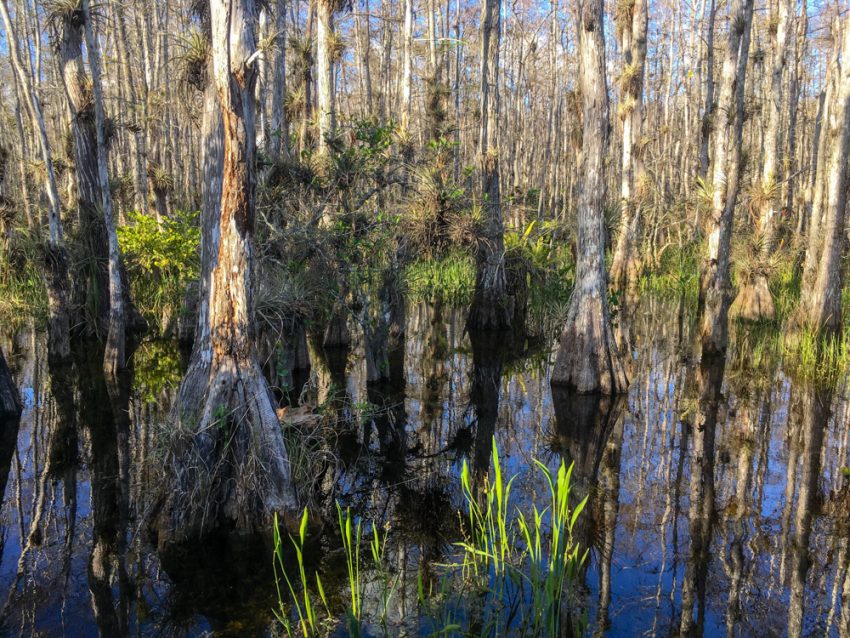
After traversing the wilds of Big Cypress with the trained eye of a native gladesman, we stopped by the Big Cypress Swamp Welcome Center to get our National Park Passport Stamps, and had the bonus of seeing some manatees wading in the water from the boardwalk behind the center. We didn’t have the time to stop, but Big Cypress also has an Oasis Visitor Center that we were told has some viewing opportunities for alligators—if you haven’t seen enough by the time you get there!
*Note: If you’re sticking around the area and want to do some camping, a unique experience is to stay in a Chickee Cottage—a kind of open treehouse on stilts with a grass roof, sometimes netted. You’ll find plenty of them on the western outskirts of the park. The one we nearly stayed at was actually right on US-41, just behind a tourist stop called the Official Skunk Ape Headquarters, which boasts one of the largest snakes in captivity in the world—Goldie, the 350lb+ reticulated python. You’ll also find some fun local merchandise related to the Skunk Ape (basically Florida’s Bigfoot), alligator products, and native crafts. We decided not to brave Florida’s mosquitos during this trip, but staying in a Chickee Cottage is certainly on the bucket list.
Sanibel Island
Following our swampland safari adventures in the Everglade and Big Cypress, we were finally headed to see some of Florida’s Gulf Coast beaches. From the western reaches of the National Park territory, the drive was just under two hours to our first west coast destination—Sanibel Island.
We had only set aside a half-day for Sanibel, but like most places we visited, you could definitely spend a week. The only danger in staying longer is a growing seashell collection that might not fit in your luggage! Sanibel is a barrier island uniquely oriented in an east-west direction, allowing it to catch a vast array of shells that roll in with the tides from a north-south direction. Year-round, the island draws shell collectors and the supply never runs out!
You can also visit the Bailey-Matthews National Shell Museum on Sanibel, which has its own impressive collection of shells from around the world, from record-breakers to local oddities found on Sanibel. You’ll learn what gives a shell its color, and there’s even a series of films about the critters that live inside the shells before you find them.
Overall the island is very laid-back with plenty of options for vacation rentals and resort accommodations and loaded with beach shops. If you plan to stay, we suggest this great place.
Bowman’s beach is the most popular with beachcombers, and there’s plenty of coast to go around. Other nearby attractions you might want to check out include the Sanibel Lighthouse, Captiva Island, and the J.N. “Ding” Darling National Wildlife Refuge known for its vast diversity of birds. We had already booked a night at the Sleep Inn in Sarasota, so we did not have time for these additional attractions.
*Note: Surprisingly, the Sleep Inn was one of our favorite places of stay during this trip. Not only was it reasonably priced for the night, but it was the most comfortable, clean, and convenient place of stay we experienced in Florida. The hotel staff were extremely helpful, and the place had a 24-hour kitchen with access to complimentary water, juice, coffee, tea, and assorted fruits. Can’t beat that!
Siesta Key
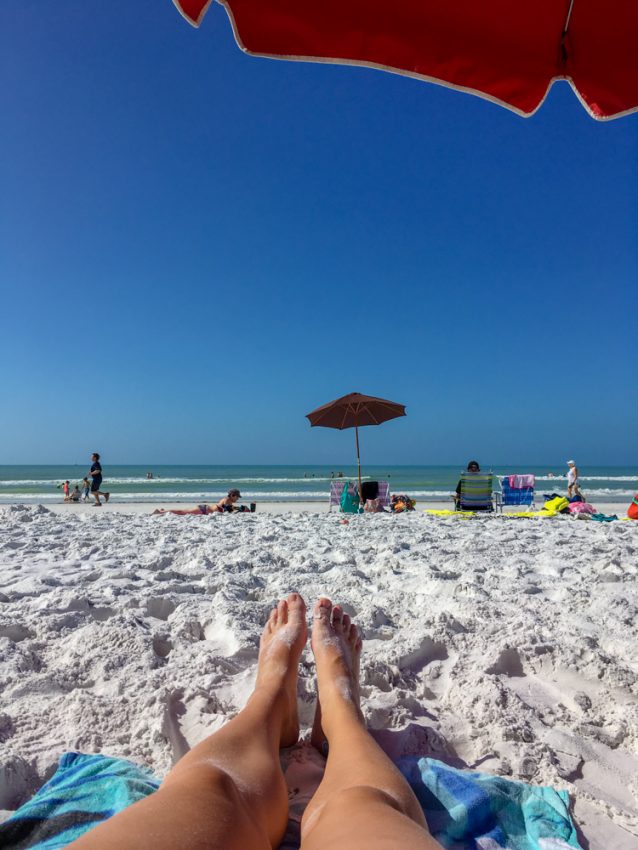
Our reason for choosing the Island Inn was to be closer to our next Gulf Coast destination—Siesta Key Beach. Rated the number one beach in the United States, Siesta Key is unique for its fine powder quartz sand, which is always soft and cool on the feet.
You are welcome to bring your own chair, umbrella, towels, and food, but there are also plenty of nearby amenities along the shore for beachgoers to rent or buy. If you’re looking for a nice long day of sunshine, swimming, and relaxation, then Siesta Key has you covered. The nearby hub of town has plenty of beach shops, places to eat, and, of course, resort hotels if you prefer to have accommodations just steps from the beach.
*Note: Again, we did not have the time to squeeze it all in, but if you travel a few more hours north of Siesta Key there are some great eco-tourism opportunities at Crystal River—namely: swimming with manatees. It’s definitely on the docket for the next Florida trip!
*Also notable, if you plan on collecting your National Park stamps, is De Soto National Memorial Park, which commemorates the 1539 landing of Hernando de Soto and the first extensive organized exploration by Europeans of what is now the southern United States.
*And finally, if you’re visiting in February and love baseball, you may want to visit some of the training hubs for major league teams and have a chance to meet your favorite players.
Disney World
After a nice mellow day at Siesta Key Beach, we were all rested up to take on the happy chaos of Disney in Orlando. There’s really no great way to get a discount for a day or two at the parks. The discounts only begin to apply when you book three days or more, and usually when you stay at one of Disney’s resort hotels.
We did reasonably well booking a night at Quality Inn & Suites by the Parks, and opting for a one-day Park Hopper Pass, which allowed us to visit Animal Kingdom and Epcot in a single day. While Magic Kingdom is classic Disney, we did our research and learned that many of the rides here were under maintenance for the winter season—so be sure to look into this kind of thing before you go. As a lover of travel, Animal Kingdom and Epcot are also my personal favorites as they both celebrate themes and cultures from around the world. Since most people are familiar with Disney, I won’t go into detail on the parks themselves, but rather detail useful information and tips from my experience there.
While the parks are certainly expansive and you really do need days at each one to explore every corner, we made the most of our visit by strategically planning our fast passes. When you order your park tickets, Disney allows you to reserve three fast passes per person in one park, 30 days in advance (60 days in advance if you’re staying at a Disney resort). We decided to begin our day at Animal Kingdom, so that’s where we used our first three passes. Once those are used, you can load additional fast passes one at a time as you use them. It’s helpful to download the app on your phone so you can keep an eye on available passes as you wait in line for rides, but they also have kiosks in the park to do so. All in all, I think we each used 7 fast passes between the two parks.
Now, the latest and most popular attraction at Animal Kingdom is the Pandora section, modeled after the world of the movie Avatar. The showcase ride here is called Flight of Passage, and it’s nearly impossible to get a fast pass. The only way to avoid waiting hours in queue for the ride is to arrive at the park at 7:30 AM, before the gates open. We did this, and it was well worth it! Though the park opens at 9 AM, Disney starts letting guests in at 8:30 AM, and they all flock to Pandora. Using this strategy, we had experienced the ride and were on our way to the next one by the time the park opened at 9 AM.
*Note: 9 AM is the opening hour for Animal Kingdom during the winter season. In the summer, opening is 8 AM, so you will need to adjust arrival times accordingly.
The ride itself is the most popular ride in Disney for a reason. It uses the latest simulation technology to fully immerse guests in the experience of flying on the back of a creature called a banshee. You’ll feel the wind rush past as you dive off cliffs, a light mist when you fly down a roaring waterfall, and the smell of damp wood as you soar beneath the canopy of a forest. Imagineers considered every one of our senses when they built the ride, and you’ll even feel the creature beneath you as it breathes!
Before leaving Animal Kingdom around 2 PM, we had experienced Pandora’s Flight of Passage and Na’vi River Journey, Festival of the Lion King, It’s Tough to be a Bug, Kilimanjaro Safari, and Dinosaur with time for a quick bite to eat and the Maharaja Jungle Trek. Then, moving on to Epcot, we were able to ride Spaceship Earth, Soarin,’ Mission: Space, and Frozen Ever After with time to visit the locations around the World Showcase, enjoy dinner at Marrakesh Restaurant in the Morocco section, and watch the evening fireworks show IllumiNations.
*Note: Disney now allows guests to bring in their own food, if you’re looking for ways to save. Refillable bottles are also allowed. See Disney’s website for specific regulations.
Universal Studios
The final day of our trip we had set aside for Universal, which is divided into two separate sections: Islands of Adventure and Universal Studios. We were mainly interested in checking out the new Harry Potter attraction of the park, which is divided between the two—Hogsmeade in Islands and Diagon Alley in Universal. Unfortunately, to experience the entirety of the Harry Potter section, you’ll have to get tickets to both sides of the park, which also allows you to ride the Hogwarts Express train between the two.
Since this was also our first trip to Universal, we decided to splurge to get the whole experience. Starting at the Universal Studios section we were surprised to find things fairly quiet. We blazed through the lines on a couple of popular rides—Transformers, Revenge of the Mummy, etc.—as we made our way towards the London section of the park where Diagon Alley was incorporated. Winding our way through the brick entranceway, Diagon Alley opened before us in a massive bustle of people compared to the ghost town we had just experienced in the rest of the park. Everyone was at Universal to experience Harry Potter.
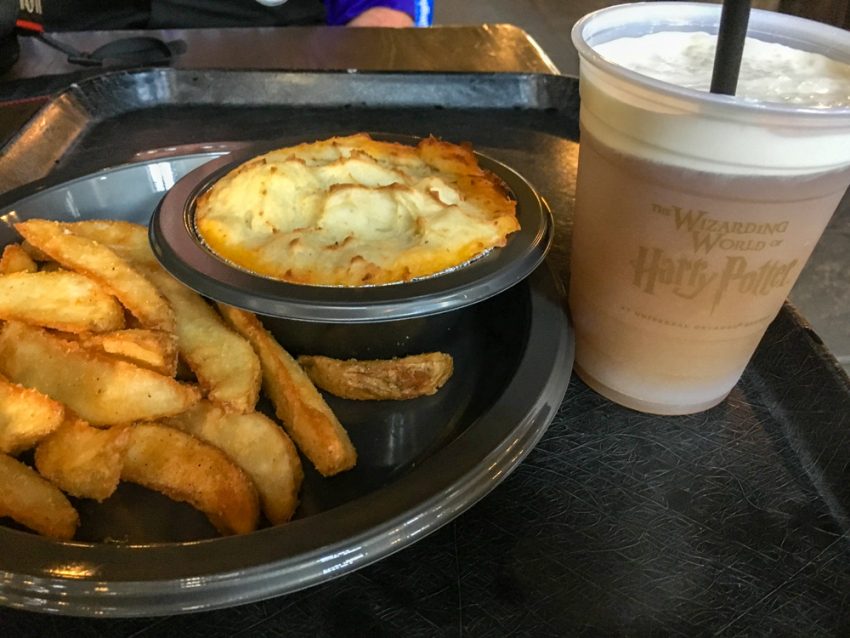
Despite the crowds, the new Harry Potter section was a fun place to explore as you can visit shops and pubs that your favorite characters frequent in the movies and books. You can even purchase a wand that will make magic happen in designated spots around the two Harry Potter sections. The two main rides of each section are at Gringott’s Bank in Diagon Alley and in Hogwarts Castle in Hogsmeade. And, of course, you’ll have to try some Butterbeer before you leave, served hot or cold.
We also did a little exploring around Islands of Adventure, hopping on rides like Jurassic Park River Adventure and Skull Island: Reign of Kong, but we were also on a schedule to catch our flight that evening. If theme parks are your thing, you could definitely spend a few days experiencing Universal as well.
That’s it!
After finishing up our Southern Florida adventures exploring Orlando’s two biggest theme parks, we flew back to wintry Pennsylvania on a Saturday night. And, boy, were we glad to have that extra day to rest and recoup before the work week.
In just one week, we had experienced a sampling of Southern Florida. From national parks to theme parks, we saw the natural wonders of seashores, keys, islands, and swamplands as well as fabricated worlds from great imaginations shedding a little magic of their own. It was a whirlwind adventure and it was wonderful. Now it’s your turn to pick and choose and make it your own!
Since graduating from Bucknell University, Alana has been seeking out life as a nature and travel writer. With a thirst for adventure, she has traveled extensively through Greece for archaeology, Nepal as a volunteer, and much of the U.S. by road trip, seeing natural wonders of her native country.
With every place, she keeps a writing and sketch journal to capture everything in the moment. She feels it is key to attaining the essence of what makes a place so alive.

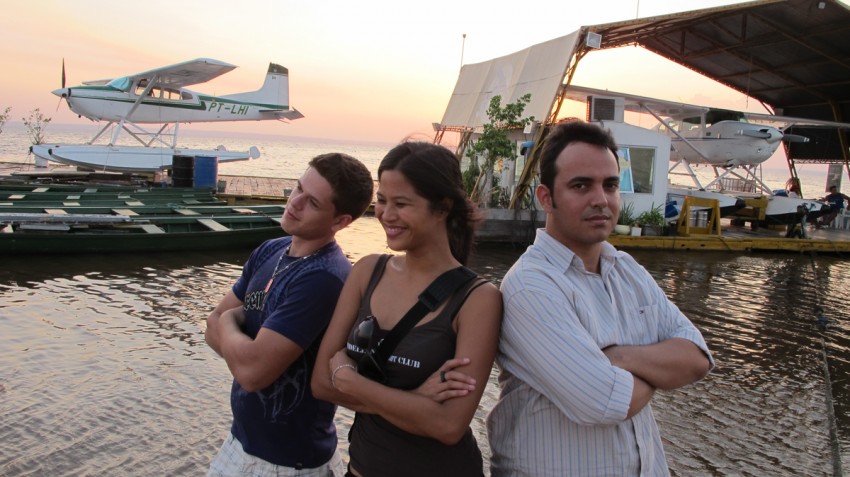
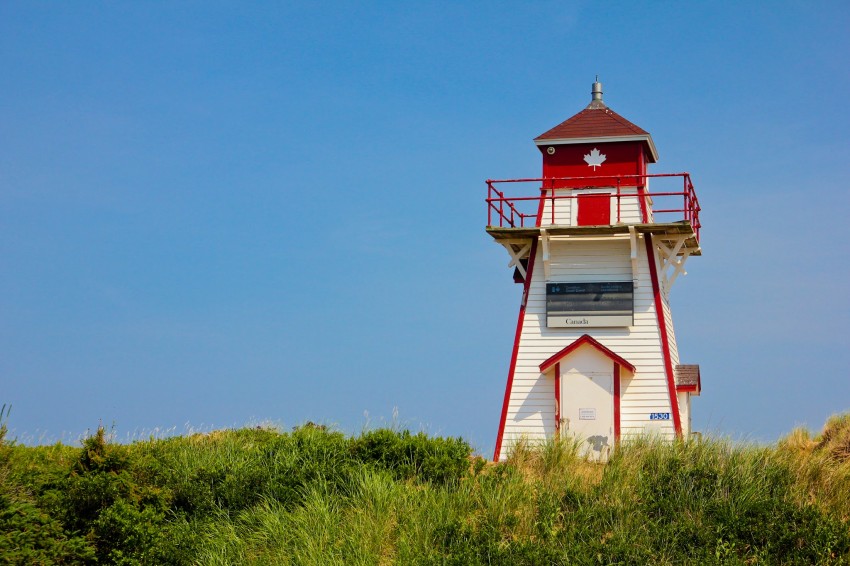
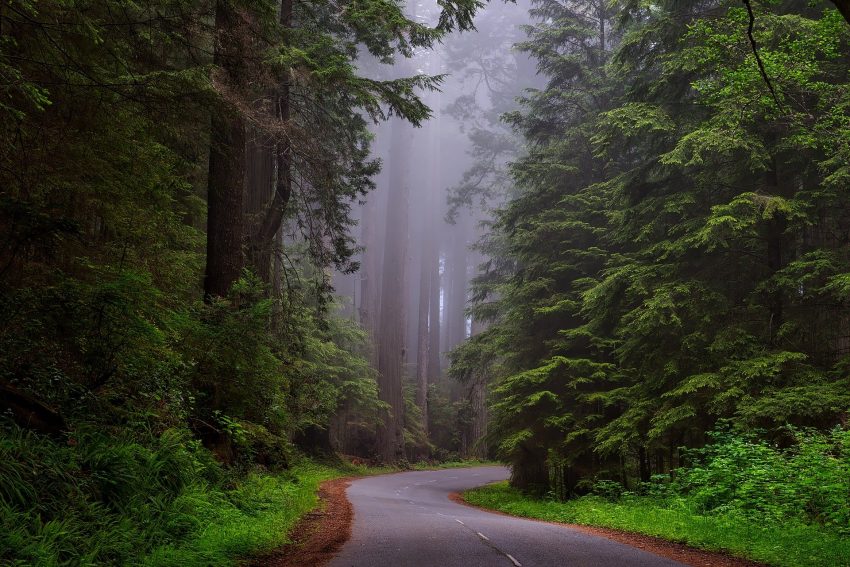
Amazing content loved each and every word of it. I have been planning on visiting Florida for so long thanks for such valuable information. I’ll keep an eye on the blog